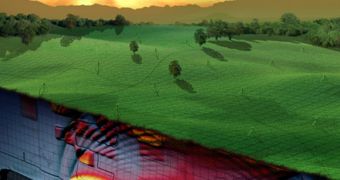Researchers at the California Institute of Technology (Caltech), in Pasadena, announce the creation of a computer model covering a fault line segment that is still geologically active, and producing earthquakes. This is the first time such a complex model is created.
The dataset represents a single physical framework that combines geological, seismologic and geodetic information in a comprehensive outlook of this specific fault line segment. What is interesting about this research is that it explains this region during both active and inactive periods.
Geologists say that fault lines can display either seismic (fast), or aseismic (slow) behaviors. In order to be able to predict the timing and intensity of the next earthquake, scientists first have to understand how fault lines work. This model could make figuring out this complex system a lot easier.
The new work was carried out by scientists with the Division of Geological and Planetary Sciences, and the Division of Engineering and Applied Science, both at Caltech. Details of the study were published in the May 11 issue of the top journal Science.
“Our study describes a methodology to assimilate geologic, seismologic, and geodetic data surrounding a seismic fault to form a physical model of the cycle of earthquakes that has predictive power,” says lead study author and Caltech postdoctoral scholar in geology, Sylvain Barbot.
“Previous research has mostly either concentrated on the dynamic rupture that produces ground shaking or on the long periods between earthquakes, which are characterized by slow tectonic loading and associated slow motions – but not on both at the same time,” adds Nadia Lapusta.
She holds an appointment as a professor of mechanical engineering and geophysics at the Institute, and was also the coauthor of the Science paper. “In our study, we model the entire history of an earthquake-producing fault and the interaction between the fast and slow deformation phases,” Lapusta adds.
The Caltech group analyzed the Parkfield segment of the San Andreas Fault line. This region tends to produce earthquakes of magnitude 6, once every 20 years or so. The model the team put together simulated the formation of multiple earthquakes within the fault line, in tune with what actually happened.
“Our model explains some aspects of the seismic cycle at Parkfield that had eluded us, such as what causes changes in the amount of time between significant earthquakes and the jump in location where earthquakes nucleate, or begin,” Barbot concludes.

 14 DAY TRIAL //
14 DAY TRIAL //